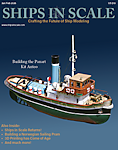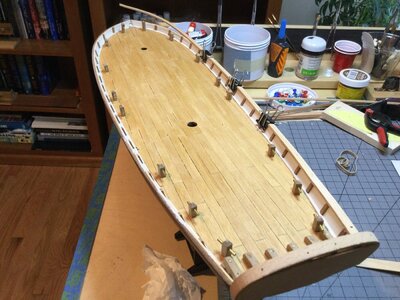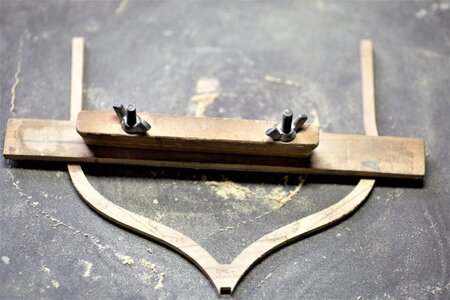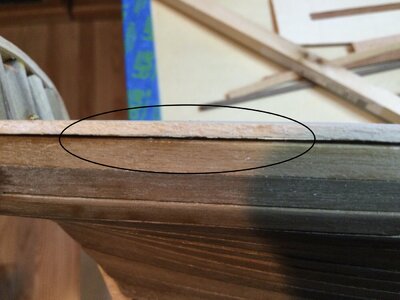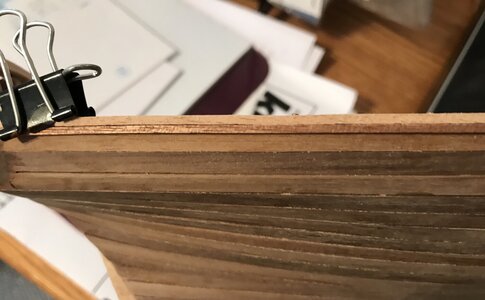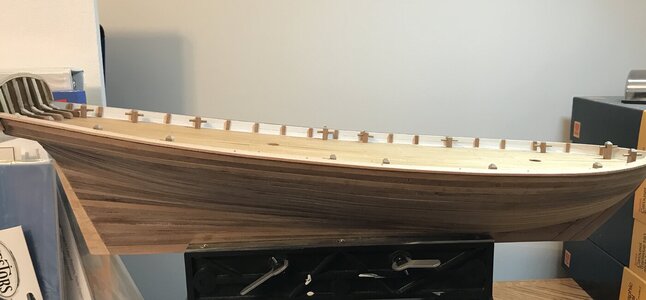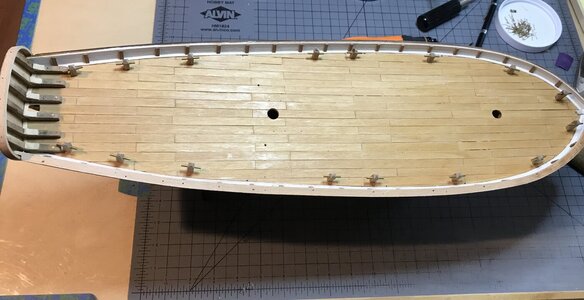Wood Type:
I’m working on the railings, and the wood to be used is “Biegeleiste”, my German is a little rusty and “Google” doesn’t translate it.
My reason for asking is curiosity. My method for bending wood is to soak, and place it in a jig to get the proper/ bend curve. When I removed the two pieces after an overnight soak, they were some squiggly. They looked liked little garter snakes. I’ve got them clamped between two sheets of plexiglass to flatten then while they dry out.
So what kind of wood is this?
Jan
I’m working on the railings, and the wood to be used is “Biegeleiste”, my German is a little rusty and “Google” doesn’t translate it.
My reason for asking is curiosity. My method for bending wood is to soak, and place it in a jig to get the proper/ bend curve. When I removed the two pieces after an overnight soak, they were some squiggly. They looked liked little garter snakes. I’ve got them clamped between two sheets of plexiglass to flatten then while they dry out.
So what kind of wood is this?
Jan


